



 |
 |
| 発信:山尾 政博 広島大学 食料環境経済学研究室 |
| 私たちの研究室では、参加型資源管理の進み具合、地方自治体の資源管理への関わりなどについて、タイ南部のパンガー湾周辺の漁村調査を、1−3月に実施する予定にしていました。しかし、調査対象地の漁村が津波災害を受けたために、本格的な調査を延期せざるをえなくなりました。2月20日から3月6日までの間、落ち着きを取り戻し、復興への準備が活発化している調査対象地に出向き、本格調査に向けた準備をしてきました。このページでは、人々のこれまでの持続的な資源利用・管理への努力を紹介するとともに、津波被害をどのように克服しようとしているのかを報告します。 |
| Preliminary survey on coastal community development and resource management Phattareeya Suanrattanachai, Kuga Mizuho, Wantana Chenkitkosol February 20 - March 6, 2005 |
| Introduction |
|
|
・Andaman Coast in southern Thailand was attacked by Tsunami in December 26, 2004 ・Six provinces damaged by disaster face crisis of coastal resources (CR) utilization; Ranong, Phang-Nga, Phuket, Krabi, Trang, Satun | |
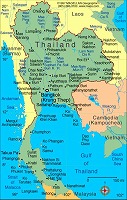 |
|
| Issues concerning Fisheries communities | |
|
・Losing income due to crisis of CR utilization Fisheries activities - Destroying of fishing gears and fishing boats - Low catches and low demand of fish products Cage culture activities - Damage of fish cage culture & shellfish culture - lost of fish stocking in cage |
|
| Ctd. | |
|
・Tourist activities - Lack of tourists - Feasible increase of the jobless people - Time-consuming construction of facilities and accommodation ・Lack of new and accessible investment source ・Feasibility to modify fishing technique to get more catches after crisis |
|
| Objectives of research |
|
|
・To observe fishing activities and their impacts on resources and environments ・To investigate the management measure on coastal resources ・To assess the logistic of ‘social capital’ degree in fishing communities after crisis of CR utilization | |
| Selected research areas | |
|
・Main criteria concerning
−Fishing activities (KohMuk, Trang and KhaoThong, Krabi) −Aquaculture activities (TakuaTung, PhangNga and AoLuk, Krabi) −Tourism activities (KohMuk Island, Trang) | |
| Research areas |
|
 |
|
| Case of Trang Province |
| - Koh Muk village, Koh Libong Sub-district, Kantang District |
| Koh Muk, Trang Province | |
|
General information - small island, 20 minutes by boat from main land - population 2500 people and 447 households - main career are fisheries (70%) and rubber plantation (30%) - a lot of famous tourist places nearby the island |
|
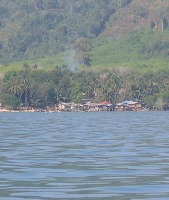 |
|
| Fishing activities | |
|
・Number of fishing boat: 500 (< 10 m.) ・Fishing gears: crab net, sillago net, scad net, squid trap, hook and line ・Collecting sea cucumber by diving around island | |
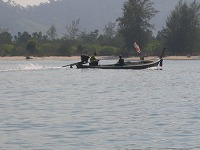 |
 |
| Tourist activities | |
|
・High season between November to April ・50% of fishers change their boat for traveling service in high season ・Income from tourists about 2,500 baht per trip and 20-25 trips per year ・5-6 Bungalows and resorts on island | |
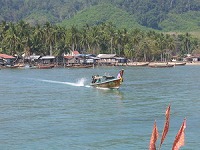 |
 |
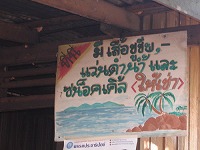 |
Snorkeling equipments for rent |
| Resort construction | 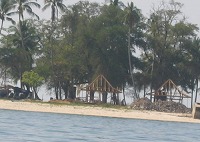 |
| CRM activities | |
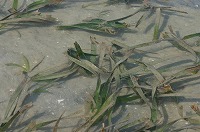 ・To conserve Dugong by do not operate fishing in the seagrass beds | |